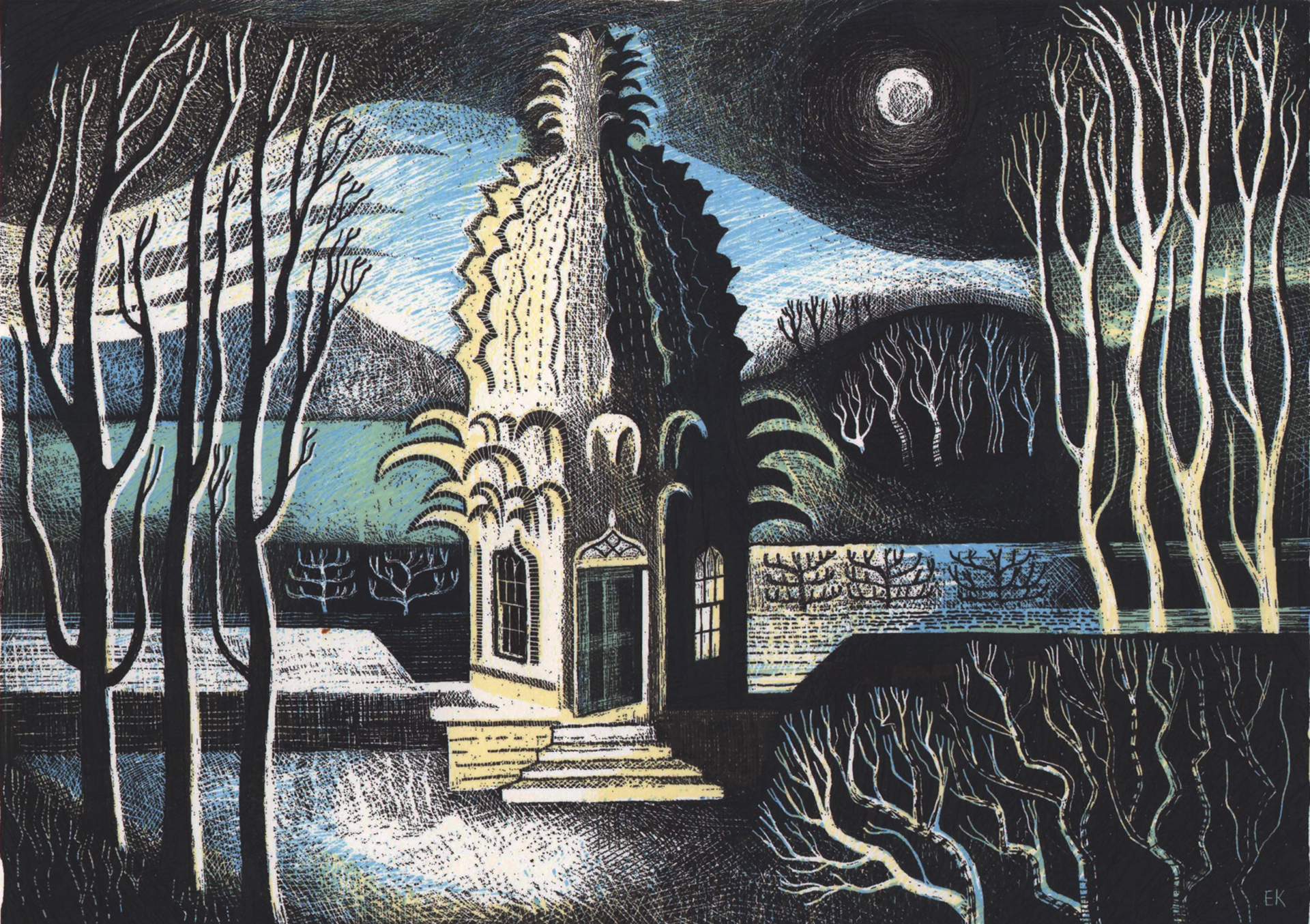Preview: Ed Kluz
During the 18th century the upper classes drew inspiration from Ancient Greece and Rome to build aesthetically pleasing yet mostly useless structures in the grounds of their stately homes
Peaking in popularity during the 18th century, follies were, by definition, odd. Described in the dictionary as “any costly structure considered to have shown folly in the builder”, and most frequently constructed in the grounds of stately homes, these strange edifices were built primarily for decorative purposes. They featured architectural nods toward classical Greece or Rome and inspiration drawn from Egyptian pyramids or Chinese temples. One was fashioned to resemble a giant pineapple.
North Yorkshire-based painter, illustrator and printmaker Ed Kluz is set to open Sheer Folly – Fanciful Buildings of Britain, his largest solo exhibition to date, at Yorkshire Sculpture Park. Comprising paintings, prints and collages, Kluz’s work will celebrate the eccentric and often overlooked buildings that loom unexpectedly at anomalous locations throughout the country.
“I’ve always been curious about follies as they’re buildings which serve no purpose other than to represent the fashion, tastes and spirit of the times they were created in,” explains Kluz from his Richmond studio. “Plus, you can really see the personalities of the people who commissioned and built them. They’re just so reflective of the more frivolous aspects of human nature.”
The pieces Kluz will exhibit in the Sculpture Park’s YSP Centre are arresting, with vivid, dream-like, almost fairy tale qualities. “A lot of these buildings are fantasies anyway, full of influence from medieval gothic to Moorish temples, and built to inspire fantastical moods. Handling them with a theatrical style is logical, really.”
Follies featured include Stowe’s statuesque Gothic Temple, the diminutive Fisher’s Hall near Masham, Yorkshire and the aforementioned Dunmore Pineapple in Stirlingshire, likely Britain’s most famous folly, an architectural marvel and once crowned “the most bizarre building in Scotland”.
Sadly, many of the buildings realised in Sheer Folly are no longer standing. During much of the 20th century increasingly poor country estates could not afford to maintain them and they fell into disrepair. For his depictions of non-existent buildings – including his painting of the Bella Vista folly that once stood in what are now the Yorkshire Sculpture Park’s grounds – Kluz used architect’s drawings, early watercolours, engravings and occasionally photographs as source material.
“I like the way that, as an artist, working from such mediums creates a feel for how these buildings were, so by referencing this old material, then further abstracting it I can create the depth I get in my work.”
Since the height of this flippant building fad, Kluz says that our reference points have changed regarding what constitutes a folly. The 37-year-old artist sees large public sculpture and the like as a continuation of the theme. “It’s all an extension of British eccentricity, with people proud to exhibit their frivolous and playful side,” Kluz explains.
“As an island we’re so dense with extraordinary history – there’s so much going on per square mile – and collectively surrounded by an often bizarre, peculiar past loaded with strange tales and reasoning. I see follies as part of this story and I hope my exhibition will reflect the dynamism used to inspire and construct these buildings.”
Ed Kluz: Sheer Folly – Fanciful Buildings of Britain, Yorkshire Sculpture Park, 11 Nov-25 Feb 2018

Leave a reply
Your email address will not be published.